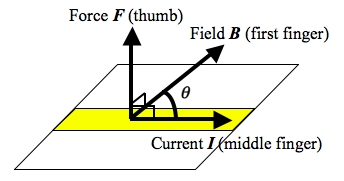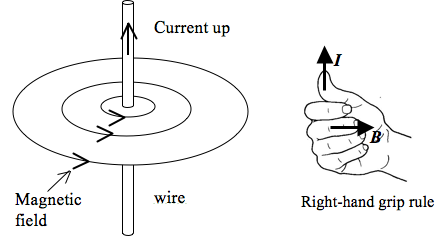[accordions autoHeight=’true’]
[accordion title=”1. Definitions”]
- The magnetic flux density at a point is defined as the force acting per unit current per unit length of the conductor when the conductor is placed at right angles to the field.
- One tesla is the uniform magnetic flux density which, acting normally to a long straight wire carrying a current of 1 ampere, causes a force per unit length of 1 N m–1 on the conductor.
[/accordion]
[accordion title=”2. Magnetic Fields”]
- The following are the vector symbols used in diagrams to represent the direction of vectors in 3 dimensional space:
- The following are some important points to take note when representing a magnetic field by magnetic field lines:
- Magnetic field lines appear to originate from the north pole and end on the south pole.
- Magnetic field lines are smooth curves.
- Magnetic field lines never touch or cross.
- The strength of the magnetic field is indicated by the distance between the lines – closer lines mean a stronger field.
[/accordion]
[accordion title=”3. Force on a Current-Carrying Conductor in a Magnetic Field”]
- When a wire of length

- The directions of the vectors can be recalled by using the Fleming’s Left-Hand Rule.

[/accordion]
[accordion title=”4. Force on a Moving Charge in a Magnetic Field”]
- A charge
[/accordion]
[accordion title=”5. Magnetic fields of current-carrying conductors”]
[/accordion]
[accordion title=”6. Ferromagnetic Materials”]
[/accordion]
[accordion title=”7. Force between Two Parallel Current-Carrying Conductors”]
- Like currents attract and unlike currents repel.
[/accordion]
[/accordions]
